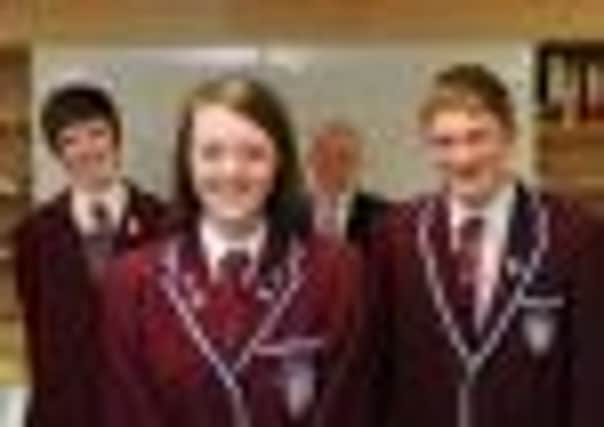Schism at heart of Scotland’s exam tables


Pupils at Jordanhill School in Glasgow, which receives public funding but is not under local government control, received the best results, with 77 per cent passing three or more Highers.
There were three schools in East Renfrewshire in this year’s top ten, with St Ninian’s High School in Giffnock scoring the best results of any state school, with 70 per cent of S5 pupils achieving three or more Highers.
Advertisement
Hide AdAdvertisement
Hide AdIn contrast, schools in some of Scotland’s most deprived inner-city areas failed to have any pupils passing three Highers.
The figures once again highlighted the disparities between the results achieved at schools in more affluent areas, compared to those in less well-off parts of the country.
However, educationalists warned against writing off schools which had performed badly, saying the results were just one marker of success and often failed to paint a clear picture of how a particular school was performing.
Figures for Scotland overall show that 78 per cent of pupils were able to gain five or more Standard Grades at level 4 or better, while 26 per cent achieved three Highers – a one percentage point rise on last year.
The statistics, which provide a detailed breakdown for every secondary school in Scotland, were published online yesterday on the Scottish Schools Online website run by Education Scotland. As the Scottish Government does not publish exam league tables, The Scotsman has processed the statistics to produce a list of the country’s best-performing secondary schools.
Predictably, many of the best-performing schools are in more affluent areas where there are fewer children receiving free school meals, for example. In East Renfrewshire, which has St Ninian’s, Mearns Castle and Williamwood in the top ten, just 9.7 per cent of pupils receive free schools meals.
That compares to almost 30 per cent in nearby Glasgow City, which has four schools in the bottom ten.
At Castlebrae Community High School in Edinburgh, where no pupil gained three or more Highers, more than half the school receives free school meals.
Advertisement
Hide AdAdvertisement
Hide AdHowever, there are exceptions such as Barrhead High in East Renfrewshire, where nearly a quarter of pupils gained three or more Highers, despite 19 per cent of the school roll receiving free school meals.
Commenting on the results of his schools, East Renfrewshire Council’s education convener, Alan Lafferty, said: “The performance of our schools right across the board is cause for celebration. They have delivered for yet another year with superb results and are an inspiration to us all.
“Our approach in East Renfrewshire is to focus on the needs of every individual pupil and direct our attention and expertise on encouraging each to achieve their potential.”
However, Dr Mark Priestley, of Stirling University’s School of Education, warned against reading too much into the statistics.
He said: “One of the problems with league tables is that they give quite a misleading picture of how good a school is. There are very good schools in deprived areas which look like they are underperforming simply because their results are not so good. There are others which are underperforming but look ostensibly good due to the league table.
“Most schools are quite clever at using techniques such as massaging groups within the school and teaching to the test. Schools in affluent areas are also more likely to have students who come from families who support them in their education.”
Edinburgh’s education leader, whose city has three schools in the bottom ten, as well as two in the top ten, said poorly-performing secondaries were often working against a raft of socio-economic problems.
Marilyne MacLaren said: “These schools are small schools working in disadvantaged areas and they face complex and challenging issues.
Advertisement
Hide AdAdvertisement
Hide Ad“We continue to work with these schools to make improvements and there have been individual successes particularly in S4. The staff are committed to the pupils’ education and we will continue to support their efforts.”
Education secretary Michael Russell added: “We know that over the last three years S4 attainment has remained stable and there has been a gradual increase in attainment across S5 and S6. It is important to look at what young people do when finishing school, and 88.9 per cent of young people moved on to a positive destination in September 2011.
“The Scottish Government approach is to focus on the outcomes for all children and young people, this should be at the heart of our education system, giving young people the skills, knowledge and understanding they need to succeed in learning, life and work.”